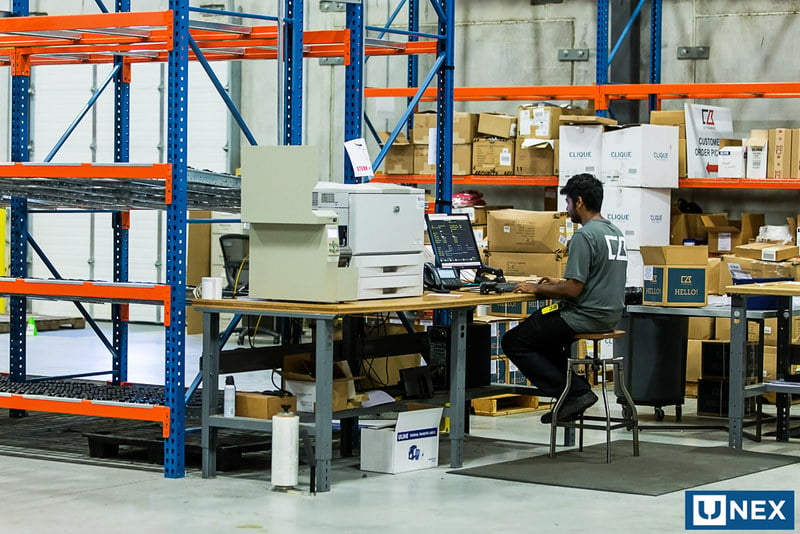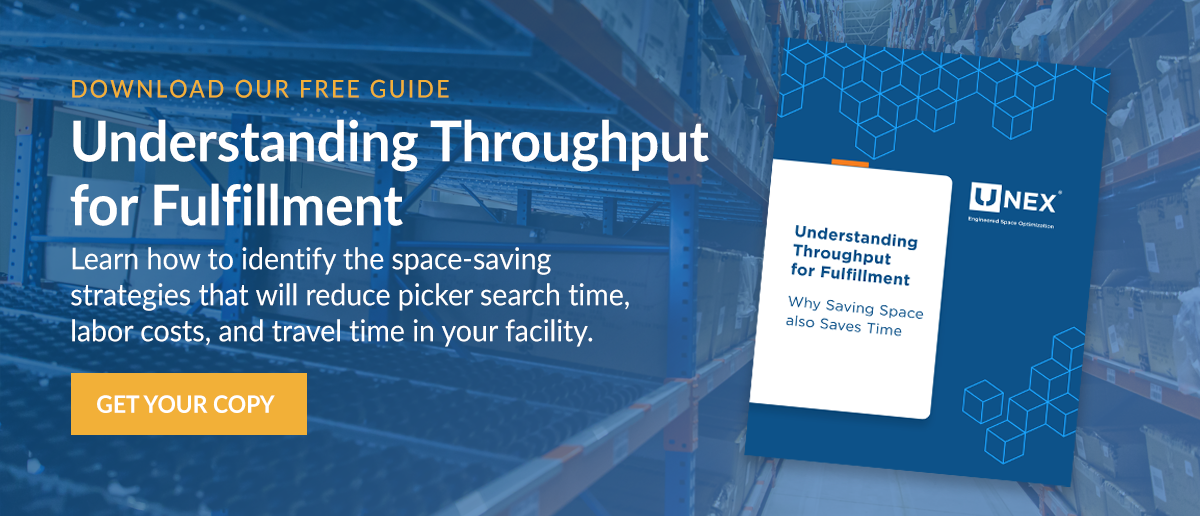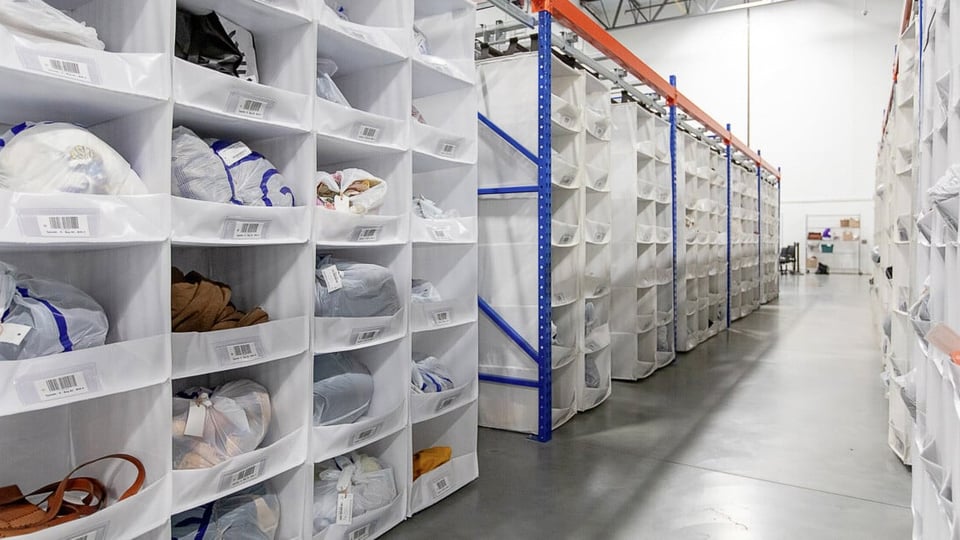Optimizing Retail Storage in Customer Pickup Areas
When the novel coronavirus made its way around the globe in the first worldwide pandemic since 1918, businesses pivoted operations to navigate the ever-changing sanitation requirements and shifts in customer expectations. Retail establishments took a large hit, with local ordinances requiring retailers to shut their doors and upon re-opening, limit staffing and increase workers' time spent on sanitation efforts.

While some retailers started adopting customer pickup before the pandemic, refining procedures such as directing customers to designated pickup areas and organizing products so customers can easily locate their merchandise are still a work-in-progress due to the slow adoption in the retail world.
When retail stores were originally designed, the layouts encouraged browsing, however, traditional store layouts did not account for omnichannel processes such as customer pickup models that COVID-19 has forced retailers to adopt.
Related Reading: 3 Critical Questions to Ask Before Implementing In-Store and Ship-from-Store Logistics
Why Customer Pickup Matters
During the pandemic, an omnichannel order and pickup process has become a more significant component of a customer's decision-making process. When customers purchase products online they expect an efficient and safe pickup experience in-store.
According to Barclaycard, “42% of consumers say that they rely on click and collect services because they are out during the day. Instead of having to take time to wait at home for a delivery, consumers can choose a day and time that is convenient for them to go to the store to collect their order.”
In a struggling economy where retailers are facing stiff competition for business, a stellar customer pickup experience and a sleek, organized pickup area can set a retailer apart from the competition.
Reconfigure Existing Layouts
In a retail store, it’s hard to find spare space in a business where every square foot is so valuable. Maximizing space utilization behind registers or behind a customer service desk will help retailers create an efficient and effective in-store pickup solution.
Before they implement a pickup area within their existing floor space, retailers need to consider these critical steps:
- Examine retail storage closets, return areas, bulk storage areas, and backrooms and consider how these areas could be condensed or repurposed.
- Design a bin system that organizes customer’s orders so they’re not standing around, waiting for their order to be located.
Beyond customer experience, pickup areas need to accommodate seasonality and consumer trends. During cold months, a retailer in the clothing industry might need bigger bins to hold bulky sweaters or coats. Whereas warmer months may only require small bins to hold clothing with less fabric like T-shirts or tank tops.
Leverage Retail Storage to Adapt to Curbside Pickup
During the coronavirus pandemic, retailers have leveraged curbside pickup models that allow customers to order online and pick up orders from the parking lot. While the National Retail Federation (NRF) analysts claim shoppers are eager to return to browsing the aisles of a store, shoppers may not be able to shop in-store as frequently due to the virus.
Recent increases in online orders for pickup will require greater investment in curbside pickup, which comes with its own unique set of challenges. The NRF has reported that “Managing curbside pickup does come with challenges and requires the key components of labor, inventory, software, and physical access and set up. While retailers need parking access and a system to keep the line moving, they also need a robust POS system, inventory visibility, and flexible labor to manage it all.”
To implement an efficient curbside pickup model, staff will require high-density storage solutions that help them quickly-locate items in their retail backroom, fulfill orders, and deliver products to customers in the parking lot.
Utilize Modular Retail Storage to Optimize Pickup Areas
To keep up with customer expectations and curbside pickup trends, retailers should consider leveraging a high-density mobile unit storage solution to create a clean, organized, temporary storage area that is configurable to the unique needs of the business and their industry requirements. With a flexible, mobile solution, retailers can mobilize processes for restocking, order fulfillment, seasonal demands, and more! It can also help organize storage in the customer pickup area, as well as streamline order picking from the store aisles or backroom to prep orders for customer pickup.
Key Takeaways to Optimize Retail Storage in Customer Pickup Areas
Retail sales have returned to pre-pandemic levels as stores have reopened in June, but wholesale recovery is being threatened by a spike in COVID-19 cases. Rather than prepare for a return to normal, retailers will need to adapt to ever-evolving customer expectations for delivery and pickup.
To optimize retail storage in existing customer pickup areas, retailers should:
- Evaluate the existing footprint and identify how staff can best pick and fulfill orders
- Maximize space utilization behind registers and customer service desks with configurable retail storage solutions
- Implement high-density storage to create more efficient retail backrooms
- Create temporary, mobile storage areas to best adapt to curbside pickup trends
Beyond optimizing retail storage in customer pickup areas, shifting expectations from consumers have also driven up the need for retailers to implement micro-fulfillment. Micro-fulfillment shrinks the footprint of a distribution center to bring the product closer to the consumers it serves. These small spaces rely on warehouse space optimization techniques in order to be efficient, and they are more often re-purposed areas or additions to retail facilities.
UNEX’s Configurable Retail Storage Solutions
From setting up micro-fulfillment to optimizing retail storage in customer pickup areas, UNEX has storage solutions that help retailers maximize space utilization. Explore our engineered-to-order products to find the right solution for your backroom or customer pickup area:
- SpeedCell - Increase storage efficiency and space utilization in your retail backroom. Dynamic SpeedCell columns easily drop into existing pallet rack to increase SKU density and pick facings.
- SpanTrack Wheel Bed - Reduce travel time for order pickers while maximizing space and creating ideal FIFO storage flow for orders and products with SpanTrack wheel beds.
- SpeedCartt - Mobilize your picking process with SpeedCartt; a modular order picking cart. Available in 4 sizes with durable built-in label holders to make organizing, segregating, and separating orders easy.
- FlowCell - Improve organization and ergonomics with a FlowCell packing station. Reduced clutter in the packing area will improve the overall accuracy of the packing process.
- Gravity Conveyor - Gravity Conveyor is an ideal solution for instantly establishing conveyor lines for packaging, shipping and receiving, and more.



